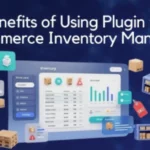Every operations manager knows the feeling: standing in a conference room while ceiling tiles drip onto presentation materials, watching a routine business day transform into crisis management theater. Here’s the uncomfortable reality most leadership teams avoid confronting until water cascades through HVAC vents during peak business hours. Implementing comprehensive flat roof inspection programs and systematic flat roof inspection schedules represents the difference between controlled risk management and expensive emergency responses that disrupt operations while damaging your organization’s reputation and bottom line.
The distinction between organizations that manage facility risks effectively versus those perpetually firefighting maintenance emergencies comes down to classification systems that treat roof integrity as operational infrastructure rather than afterthought.
Strategic facility management turns overhead into competitive advantage when executives recognize building performance directly influences everything from insurance premiums to talent retention, with roof risk assessment frameworks providing the analytical foundation for informed capital allocation decisions.
Discover insights that drive success — dive into our Related Post for more!
Decoding Severity: The Four-Tier Classification System
Risk matrices function like triage systems in emergency departments, directing attention and resources toward situations demanding immediate intervention while managing lower-priority concerns through scheduled protocols. Roof leak severity classification operates identically, categorizing potential failures by combining likelihood of occurrence with magnitude of impact. This two-dimensional analysis produces actionable intelligence that transforms vague concerns about “roof condition” into specific operational priorities backed by quantifiable risk assessments.
Critical Level Risks: The Business Continuity Killers
Top-tier severity encompasses situations where roof failures would trigger immediate business interruption, threaten life safety, or cause irreparable damage to high-value assets. Think server rooms lacking adequate protection, manufacturing lines vulnerable to water intrusion, or retail environments where ceiling collapse could injure customers. These scenarios demand immediate action regardless of budget constraints because the cost of inaction eclipses any maintenance expenditure.
Active leaks discovered above critical infrastructure automatically escalate to crisis status. Water and electrical systems mixing creates genuine hazards that facilities teams cannot postpone addressing. Similarly, structural sagging visible from ground level signals compromised load-bearing capacity that could precipitate catastrophic failure without warning. Insurance carriers increasingly employ drone technology and thermal imaging during facility assessments, flagging these critical vulnerabilities and adjusting coverage terms accordingly.
High Priority Concerns: The Accelerating Threats
One tier below crisis situations sit conditions that will inevitably deteriorate into critical problems without timely intervention. Ponding water persisting 48 hours after precipitation represents a classic high-priority issue, as standing water accelerates membrane degradation while adding structural loads that roofs weren’t designed to bear indefinitely. Similarly, failed flashing around HVAC units creates entry points for moisture that migrates laterally beneath roofing membranes, causing damage far beyond the visible failure point.
The financial mathematics of high-priority risks make compelling cases for proactive maintenance. Addressing compromised seams identified during routine inspections might cost a few thousand dollars, while waiting until those seams fail completely during peak business season triggers emergency repairs costing five to ten times that amount, plus business interruption losses that never appear on maintenance invoices but absolutely impact profitability.
Moderate Concerns: The Strategic Maintenance Window
Mid-level severity encompasses issues requiring attention within defined timeframes but not demanding immediate emergency response. Blistering membranes, minor granule loss, or drainage systems functioning but showing early signs of debris accumulation fall into this category. These conditions won’t cause immediate failures but accelerate long-term deterioration that shortens roof lifespan and increases replacement costs.
Smart facility managers exploit moderate-risk findings to optimize maintenance scheduling and budget allocation. Rather than waiting for blisters to rupture or minor damage to propagate, planned interventions during shoulder seasons avoid premium emergency pricing while preventing operational disruptions. This approach mirrors manufacturing maintenance philosophies where scheduled downtime costs significantly less than unplanned production interruptions.
Building the Assessment Framework
Effective risk matrices require more than casual visual inspections from ground level. Comprehensive evaluation protocols examine both exterior roof conditions and interior indicators that reveal hidden problems before they manifest as visible crises. Water stains on ceiling tiles, rust forming on structural elements, or musty odors in climate-controlled spaces all signal moisture intrusion that inspection teams must trace to source and severity.
Documentation transforms observations into actionable intelligence that supports strategic decision-making. Digital platforms now enable facilities teams to create photographic records with GPS coordinates, timestamp metadata, and historical trending that reveals deterioration patterns over multiple inspection cycles. This data infrastructure allows operations managers to demonstrate due diligence to insurance carriers while building evidence-based cases for capital expenditure approvals.
The inspection frequency debate generates endless discussion, but research consistently demonstrates that semi-annual evaluations catch developing issues before they escalate into expensive emergencies. Properties in harsh climates or housing critical operations justify quarterly reviews, particularly after severe weather events when hidden damage often occurs. The incremental cost of additional inspections pales compared to emergency repairs triggered by undetected deterioration.
Likelihood Factors: Predicting Failure Patterns
Risk severity represents only half the equation; likelihood assessment completes the analysis by quantifying probability that potential failures will actually materialize. Age serves as the most obvious predictor, with roofing systems approaching end-of-warranty periods demonstrating exponentially increasing failure rates. However, maintenance history, climate exposure, and installation quality significantly influence actual performance trajectories beyond simple age calculations.
Thermal imaging technology revolutionizes likelihood assessment by detecting moisture trapped beneath intact membranes that visual inspections miss entirely. These hidden saturation zones indicate failures already occurring beneath surface appearances, allowing targeted repairs that address root causes rather than merely patching symptoms. Facilities investing in thermal scanning typically discover that 15-25% of roof area shows moisture intrusion invisible to conventional inspection methods.
Environmental factors compound likelihood calculations in ways that generic risk models often underestimate. Flat roofs in regions experiencing freeze-thaw cycles face mechanical stresses that accelerate material fatigue, while facilities in coastal zones battle salt air corrosion that compromises flashing and fasteners years before membrane failures become obvious. Operations managers incorporating these location-specific variables into risk assessments generate more accurate predictions that improve resource allocation decisions.
From Assessment to Action: Operationalizing Risk Data
The most sophisticated risk matrix delivers zero value if findings don’t translate into modified maintenance strategies and capital allocation decisions. This transformation requires integration between facilities management, finance, operations, and executive leadership so that risk data informs budget cycles rather than gathering dust in filing systems that nobody consults until disasters strike.
Prioritization protocols should explicitly connect risk levels to response timeframes and authorization thresholds. Critical findings trigger immediate work orders that don’t require elaborate approval chains, while high-priority issues initiate expedited procurement processes that balance urgency against cost optimization. Moderate concerns feed into annual maintenance planning cycles where facilities teams can aggregate related work to capture economies of scale.
Financial modeling that captures total cost of ownership rather than merely tracking immediate maintenance expenses changes organizational conversations about facility investment. When executives recognize that deferring a $30,000 roof repair frequently results in $150,000 emergency replacements plus business interruption losses, budget discussions shift from “can we afford this maintenance” to “can we afford to delay this maintenance” entirely different framing that produces better outcomes.
Insurance and Liability Dimensions
Risk matrices serve secondary functions beyond maintenance planning by documenting due diligence that influences insurance coverage, premium calculations, and claim outcomes. Carriers increasingly demand evidence of systematic inspection protocols and responsive maintenance practices before issuing policies or renewing coverage for commercial properties. Organizations maintaining comprehensive documentation demonstrate risk management sophistication that translates directly into improved insurance terms.
Liability considerations extend beyond insurance relationships to encompass regulatory compliance and workplace safety obligations. Water intrusion creating slip hazards, mold growth affecting air quality, or structural compromises threatening occupant safety expose organizations to litigation risks that dwarf maintenance costs. Risk matrices that identify and track these exposure areas provide legal teams with evidence of reasonable care that proves invaluable during liability proceedings.
Technology Integration: The Next Evolution
Building management systems now incorporate IoT sensors that monitor roof conditions continuously rather than relying on periodic manual inspections that inevitably miss intermittent problems. Moisture sensors embedded in vulnerable areas alert facilities teams to developing leaks before water reaches interior spaces, while structural load monitors track snow accumulation and standing water that stress load-bearing capacity beyond design parameters.
Machine learning algorithms analyzing sensor data streams identify patterns that predict failures weeks or months before they occur, enabling truly preventive maintenance rather than reactive repairs disguised as preventive programs. These predictive capabilities mirror developments in manufacturing equipment monitoring, delivering comparable benefits for facility infrastructure that represent equivalent capital investments deserving similar analytical sophistication.
The integration of risk assessment data with computerized maintenance management systems creates closed-loop processes where inspection findings automatically generate work orders, procurement requests flow to appropriate approval chains based on priority classifications, and completion documentation feeds back into risk databases that update threat assessments. This automation eliminates manual coordination overhead while ensuring systematic follow-through on identified risks.
The Cultural Transformation Challenge
Technical risk assessment frameworks fail without organizational cultures that treat facility integrity as operational priority rather than administrative afterthought. This cultural dimension requires executive sponsorship that elevates facility management from cost center to strategic asset management, with performance metrics that connect building condition to business outcomes like operational uptime, employee satisfaction, and insurance expense trends.
Training initiatives that help non-facilities personnel recognize and report early warning signs multiply the effectiveness of formal inspection protocols. Maintenance staff, floor supervisors, and administrative personnel spending time in facilities daily often notice subtle changes that periodic inspections miss: new water stains, unusual odors, or temperature variations that indicate developing problems. Organizations that systematize this distributed observation network catch issues earlier while building facility awareness throughout their workforces.
Measuring Program Effectiveness
Like any operational initiative, risk-based roof management programs require performance metrics that demonstrate value and justify ongoing investment. Traditional measures tracking maintenance costs and emergency repair frequency provide baseline indicators, but comprehensive assessment includes business impact metrics like operational disruption incidents, insurance premium trends, and energy efficiency improvements resulting from better-maintained building envelopes.
Long-term tracking reveals how preventive maintenance programs extend asset lifecycles beyond manufacturer predictions. Roofing systems receiving systematic care commonly exceed rated lifespans by 30-50%, generating substantial returns on maintenance investments through deferred replacement costs. These lifecycle benefits accumulate over decades, making facility management one of the highest-return investments that organizations consistently undervalue.
The competitive intelligence dimension that astute operations managers recognize involves observing how peer organizations manage facility risks. Companies deferring building maintenance often exhibit similar patterns across operational domains, creating vulnerabilities that better-managed competitors exploit through superior execution. Conversely, organizations investing strategically in facilities typically demonstrate operational sophistication worth studying and potentially emulating.
Strategic Integration: Beyond Maintenance
Ultimate value from risk-based roof management emerges when assessment data informs strategic decisions beyond immediate maintenance planning. Facility condition analysis influences lease-versus-own calculations, expansion location selection, and capital allocation across property portfolios. Organizations with multiple locations can implement standardized assessment protocols that enable portfolio-level risk aggregation and strategic prioritization across assets.
Sustainability initiatives benefit from risk assessment data that identifies opportunities for energy-efficient upgrades during planned maintenance interventions. Combining necessary repairs with reflective coating installations or improved insulation systems captures synergies that reduce project costs while advancing environmental objectives that increasingly influence investor perceptions and customer preferences.
The facility risk matrix ultimately represents more than maintenance tool. It embodies systematic thinking about physical asset management that transforms buildings from passive overhead into actively managed resources generating measurable value through reduced costs, improved reliability, and enhanced operational resilience. Organizations embracing this perspective gain advantages over competitors still treating roofs as afterthoughts deserving attention only when water penetrates occupied spaces.
Unlock valuable content today — check out our Featured Post for expert guidance.






